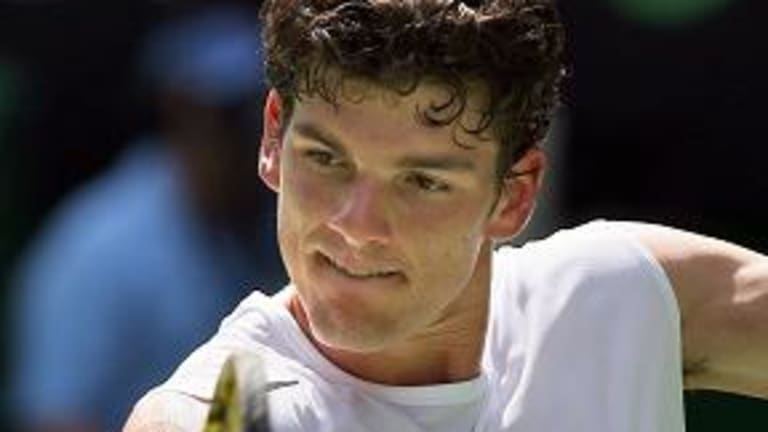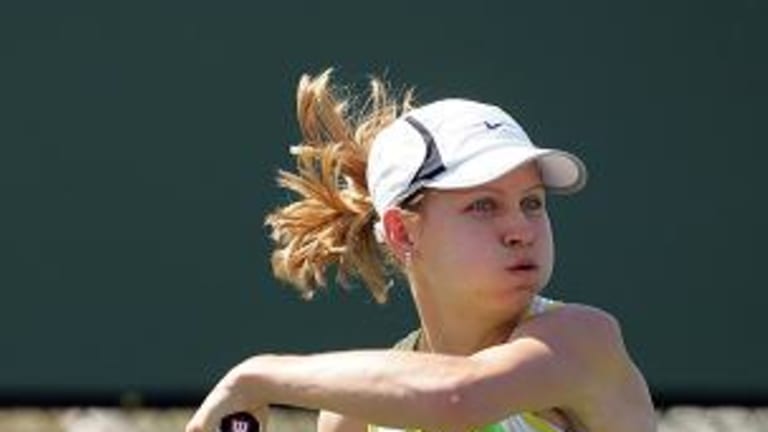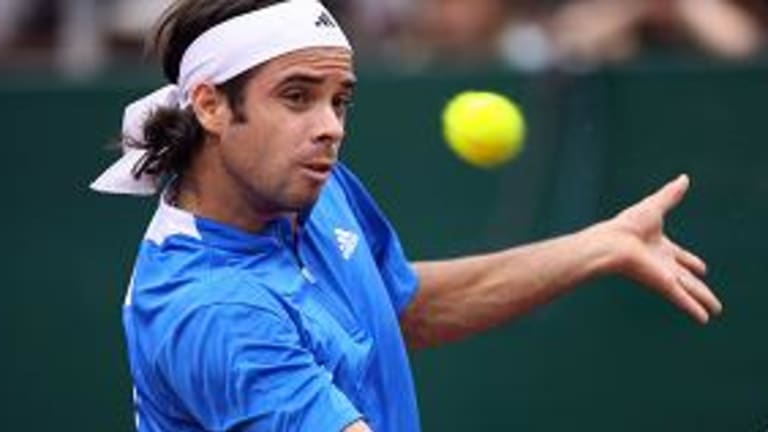One of the better things about tennis is that most events give fans a chance to get very close to the action and the players at tournaments, including a blue-chip one like the Pacific Life Open. As nice as it is to be at a Grand Slam, where you get the intoxicating sense that you're very close to what is, at the moment, the hot, molten core of TennisWorld. But there's a lot to be said for life in a cool, shady place as well.
There isn't an awful lot of shade in the desert, of course. In fact, the dry heat here can be more tricky than the oppressive humidity and heat at the U.S. Open. It may not seem very hot, but you can get dehydrated and drained of energy very quickly, and find yourself hallucination Does that scoreboard just say that Marat Safin lost to Nicolas Mahut, 6-0 in the third?. That Roger Federer is out, in the first round? But that was a risk Doug Robson and I felt well worth taking when we wandered out to catch two intriguing if not-quite-marquee match-ups on the field courts here at the Indian Wells Tennis Garden.
Our first stop was the Evgeny Korolev vs. Dmitry Tursunov battle on Court 8. At this semi-sunken court, you can watch the match from the walkway at the North baseline, slightly above and so close to the day laborer at that end that you can just about reach out and bend down to flick a piece of lint off his shoulder. Try doing that at an NFL or NBA game. It's an added bonus that as you lean on the rail and stare down the length of the court, you don't just see the other guy at the far end of the court. You see the Santa Rosa mountains looming. It's an appropriate name; all day the mountains are bathed in a palette of subtle,changing colors, ranging from coppery to mauve to honey and rose in the evening, the best time.
From our close vantage point we had a good look at the youngster (he'll be just 19 in a few days) Korolev's game. He has a curious service motion. He holds the ball close to his chest as if he were afraid that you're going to reach out and snatch it from him; then he pops it up in the air with an awkward motion. There's nothing wrong with the result, though, and it leaves you wondering if the motion is a genuine flaw or merely an aesthetic offense and you ought to get a life. The rest of his game is explosive; he hits a clean, heavy ball - as a cowboy says of a horse, he rides the fur off it.
TennisWorld's favorite blogger also knows a thing or two about whaling on the ball, and doing so brought him back from a set down to even things in a tiebreaker. In fact, Tursunov kept dialing it up to build a 3-1 lead in the second set before he was lured into commiting an offense that seems to be chronic with him - he went for too much. This is a form of reverse-choking, the standard variety consisting mostly of driving the ball wide or into the bottom of the net and then casting your eyes heavenward, as if rueing the fact that the gods of tennis had chosen this particular moment to assert their authority.
For two hours plus, the players assembled all the pieces that could be fit together into a fine ending that tied up all the various plot lines. Then Tursunov abruptly appeared to lose interest in the creative process and essentially said, Enough, Evgeny, you finish it and leave my name off the cover - it'll leave you room to get that "Y" at the beginning of yours. . . Tursunov played sloppy, dispirited tennis while Korolev managed to drive his game along a similar precipice without ever plunging over it. It was an oddly unsatisfying end to a promising build-up, but I was impressed by Korolev.
Hmmmm. . .
As we started to move on, we bumped into Hank Moravec (aka, Dunlop Maxply). He was all kitted out in a neat Adidas outfit and he had by his side his boy, Liam. The kid had a slick, shiny tennis racquet and I could tell he was just dying to get a piece of Marat, or Fernando. They were on their way to get an autograph from Ivan Ljubicic. For some reason, it made me think highly of Liam that Ivan's was the signature he wanted. Like he's a serious kid, or something.


